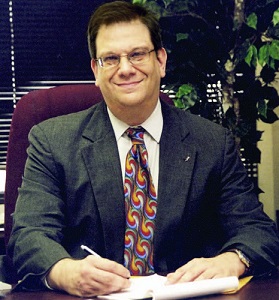August 2017, Vol. 244, No. 8
Editor's Notebook
No Surprise that Keystone XL's in Jeopardy

President Trump loves whining about “fake news” but he unwittingly gave our industry the biggest fake news story of the year in March when he grandly signed off on the Keystone XL pipeline project.
That was a nice photo taken at the White House at which TransCanada CEO Russ Girling was in attendance. Girling may have been smiling on the outside, but I wonder if that masked how he really felt. Before you can build a pipeline, you have to go through this process called an open season in which your would-be customers – the producers – make these long-term commitments that provide the financial backing necessary for construction to proceed. Right after the signing ceremony, TransCanada scheduled the Keystone XL open season to run through April 20. Guess what? The producers haven’t bought in.
Big shock. Girling and his team would have been stunned had they been successful. Despite the hundreds of millions of dollars they’ve already spent on Keystone XL, I’m sure they would just as soon move on to other less newsworthy projects. This isn’t the first time TransCanada, a company I have gotten to know and respect through the years, has rolled the dice and lost. I was told they lost $600 million in failing to get the McKenzie pipeline built in the Northwest Provinces and hundreds of millions more trying to get the Alaska gasline moving. Maybe TransCanada needs to revisit its development strategy and instead continue to focus on areas that actually want pipelines, like Mexico.
Why is it a surprise that producers have lost interest in Keystone XL and the headaches that come with it? After so many delays and boondoggles, producers – who are a very savvy lot – found other, albeit less safe, ways to deliver their product from the Canadian oil sands. Why make a 20-year commitment that you won’t benefit from until construction is completed in a few years – providing there are no further delays – when it’s easier and cheaper to sign on with your local railroad which can deliver your product quickly and to multiple locations?
Then there’s the bottom line to take into account. Crude prices are lagging in the mid $40s. Renewables are becoming cheaper, consumers are more efficient, and Keystone XL would need $70-80 oil for years to come. Producers today can profit with $50 prices, and in a free market system, there is no one to order them to slow down.
Prominent energy consultant Amory Lovins made some compelling comments in a recent Forbes piece that bear repeating.
“Twenty-six months ago, I explained on Forbes how the Keystone XL Pipeline, if approved, could be built just in time for Canadian tar sands firms, slammed by slumping oil prices, to have trouble filling it with their expensive product. Two years later, oil majors have duly bailed out of many money-losing tar sands projects, and low oil prices still besiege the survivors. Frackers, with lower costs and risks, have weathered the storm better, so they’re pulling investment away from tar sands and competing with it for pipeline capacity, including Keystone XL.
“But if the project surmounts substantial short-term legal, political, and environmental obstacles, it will then face three daunting long-term challenges: sustaining input upstream, sales downstream, and profits for its investors. Unless world oil prices rebound to roughly twice recent prices and stay aloft for decades, this 1,179-mile pipeline can’t repay its $8 billion investment, and producers can’t finance the new projects needed to keep it filled as old ones decline.
“The problems I described in sustaining tar sands production have only worsened: the new projects increasingly needed to sustain output remain among the costliest oil sources in the world. But even if investors accept that risk, what about the downstream risks of being unable to sell oil at a profitable price? Those depend on competition between ever-costlier oil and ever-cheaper alternatives. Oil is losing.”
Optimists among us might say that if and when Keystone XL is ever built, higher oil prices would benefit patient producers. But that’s not how the game is played.





Comments